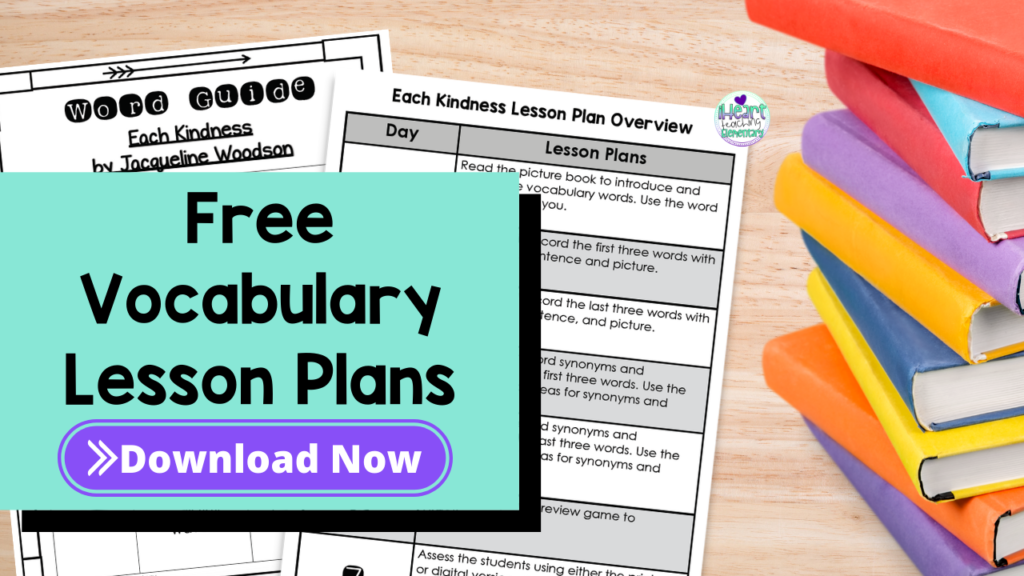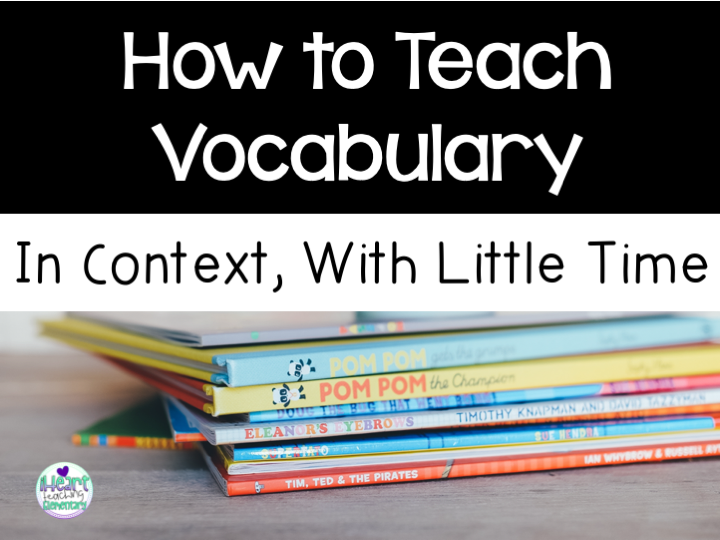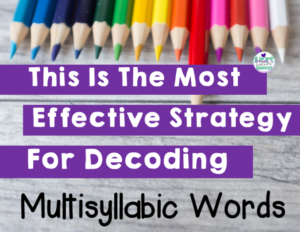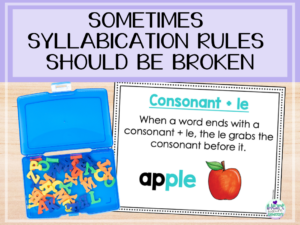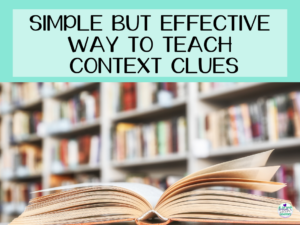Vocabulary Development
You don’t need a lot of time to teach vocabulary in context. Vocabulary is so important for reading comprehension.
Have you ever read a manual and had to analyze it in order to understand it? Understanding the difficult vocabulary probably made it easier to understand what you were reading.
One of the most important indicators of student success is their vocabulary. Why? Because the more words kids know, the better they can understand complex text. This is important for not only standardized tests but life too.
I am sure there tons of ways for teaching vocabulary.
But, I feel like I found one of the best ways to teach vocabulary in context. I’m going to show you how I teach vocabulary in my 3rd-grade classroom in only 20 minutes a day.
This way of teaching vocabulary can be used at any grade level. I have found it effective in helping my students learn new vocabulary words in a meaningful way.
Vocabulary Lesson Plans
After researching different methods of teaching vocabulary, I decided to create vocabulary lesson plans using picture books. Using picture books helps students develop vocabulary skills such as using context clues.
We have so much material to cover that I needed something that would fit into my schedule. So I designed them so that I could fit it in, every day, for 20 minutes. If we don’t finish within 20 minutes it just carries on to the next day.
Just a side note: picture books aren’t just for the primary grades. Most picture books are written with high Lexile levels that make them appropriate for upper grades. And kids of all ages love them!
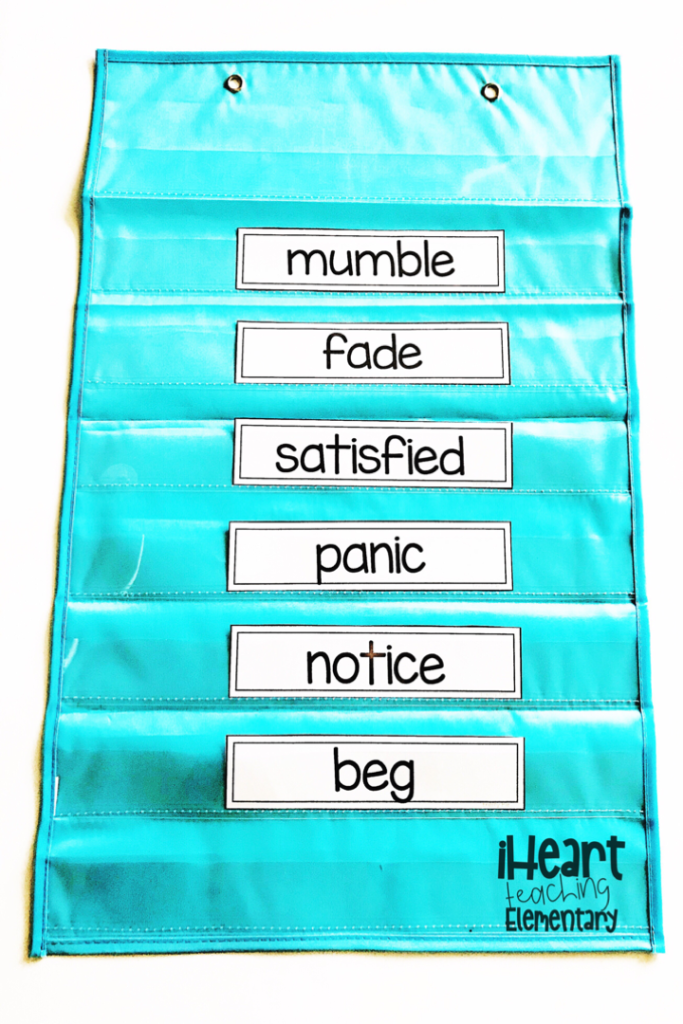
How to Use Picture Books to Teach Context Clues
When I introduce a new picture book for our new vocabulary words I make sure I have the words and their definitions close by so I can refer to them as I read. I also have a chart ready with the words so the kids know what words we will be going over.
I tell the kids to say “ding” when they hear one of our words during my reading. This keeps them engaged and helps them pay attention to the words.
As I read, I stop at the vocabulary words and decide if I want them to use context clues to figure it out or if I want to teach them directly what the word means.
I usually teach 3 directly and have them figure out the meanings with the other 3 words using clues from the text. If I want them to use context clues, I use the words that offer them in the text.

Vocabulary Building Strategies
On days two and three following my reading, we record the words, their definitions, as well as a sentence and a picture to go with each word.
Being able to write a sentence is one of the vocabulary building strategies we work on. This helps kids understand how to use the word in context. We record all of our work in the vocabulary notebook.
When we write our sentences I give them sentence starters to help them form a 7-up sentence with detail.
A 7-up sentence is a sentence that has 7 or more words.
I often tell them to use the word “because” in their sentences. This helps add detail to their sentences.
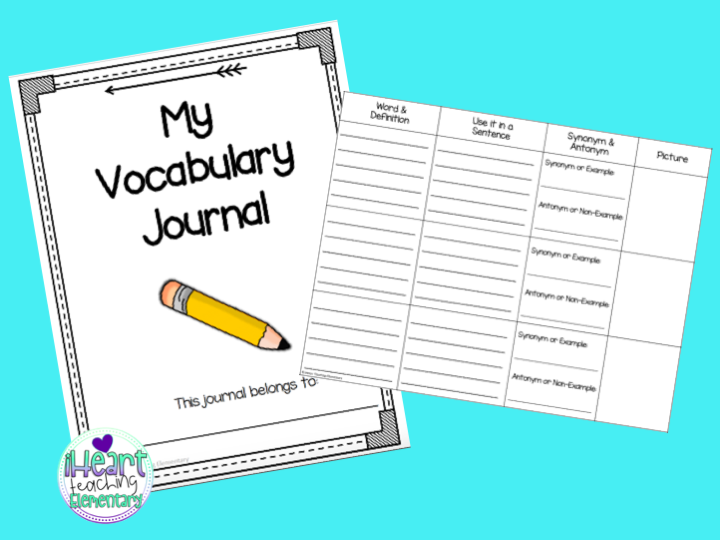
Teaching New Vocabulary
One of the vocabulary practice activities we do is find synonyms and antonyms on days 4 and 5. Finding synonyms and antonyms is essential when teaching new vocabulary.
This increases vocabulary because they are learning more new words in addition to the original words.
We are 1:1 Chromebooks so I have the kids use Thesaurus.com but you can just use regular paperback ones. They type in a word and we discuss their ideas for synonyms and antonyms for each of our vocabulary words.
Sometimes the words offered on the site don’t really work so I guide them towards finding a word that fits. I have a list of synonyms and antonyms ready to go to make it easier.
Classroom Practice with Activities and Games
Day 6 and 7 are for vocabulary practice activities and games! You can read about three games to teach vocabulary that you can use with any word list here.
Sometimes we review for two days and sometimes just one. It just depends on the word list and how the kids are doing with the meanings.
On one of our review days, I sometimes like to use a pre-made using a website like www.quizizz.com.
A fun vocabulary activity for one of the review days is a vocabulary skit. I group the kids and assign each group a word or two. (This will depend on class size.) Each group has about 10 minutes to create a skit for their word for the rest of the class. After 10 minutes, they perform the skit for the class and we have to guess what the vocabulary word is.

Teaching Vocabulary Assessment
Finally, on day 8 is the assessment. I give the students sentences with the missing vocabulary word. They have to use the clues in the sentence to figure out which vocabulary word fits best.
I hope you found some vocabulary building strategies and ideas for teaching vocabulary.
There are so many ways for how to teach vocabulary in context. I am always looking for new ways to improve my vocabulary instruction.
I’ve created a free 6-day vocabulary lesson plans mini-course that will help you teach vocabulary. Each day you’ll receive a lesson for the day and the resources you’ll need. If you’re interested just click the sign-up button below!
